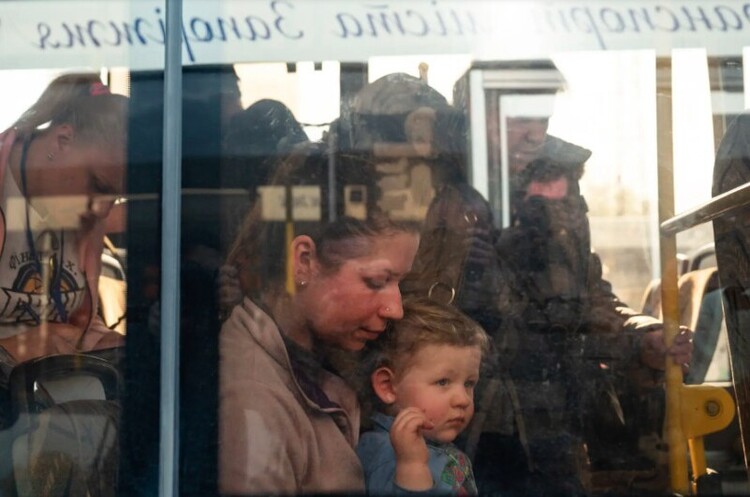The evacuees from Azovstal tell how they were surviving inside the plant and what they saw there
There are still lots of civilians and seriously wounded soldiers in the bunkers

Some of the evacuees from the Mariupol metallurgical plant Azovstal after arriving in Zaporizhzhia told how they were surviving inside the plant, writes CNN.
Elina Tsybulchenko, a former employee of the plant, says she was in the bunker from March 2 to May 1 with her family.
They'd survived on soup and tinned food and unsweetened tea – but not much of it, she said.
She told CNN that when they left, there were still 42 people left in their bunker. “Only civilians, we did not have any military in the bunker.”
Speaking about the bombing, she said: “I've never thought the earth could shake like that. It wasn't just shaking. The bunker jumped and trembled.”
CNN asked Tsybulchenko why she decided not to go to russia or the so-called DPR.
“Because I am Ukrainian, and my homeland is in Ukraine, not in russia and not in the DPR,” she said. “Mariupol was my city, but now it is destroyed, nothing has left.”
She said she had lost precious family heirlooms, such as a traditional embroidered shirt which was 150 years old.
“It survived the Holodomor (the mass starvation of Ukraine by Stalin in the 1930s), deportation, World War I, World War II, even the Nazis did not destroy it. And the fascists did not destroy Mariupol. But the Russians came and destroyed it,” she said.
According to her, the family had three apartments. “And everything burned down, everything burned down.”
She said that after leaving, they spent the night at a russian filtration center in the Bezimenne village.
On the way to Zaporizhzhia, she said she started crying when she saw the Ukrainian flag.
Tsybulchenko noted that now she just wants to wash and have clean underwear.
Serhiy Kuzmenko, also an employee of Azovstal, has been there since March 8. He said that in April, the plant's soldiers managed to get cereals and canned food to the plant every few days.
“People are rotting in basements,” he said. “So that you understand, there are 2 to 3 flights of stairs to the basement, there is dampness, there is no ventilation for 60 and more days there.”
“At the beginning of the war, the plant had 36 bomb shelters. But at the moment there are only a few left,” he said. Then he described how a two-story building was demolished by one bomb.
He said that as they were leaving, they saw that two floors of their bunker were filled with badly wounded soldiers.
Kuzmenko said that russian troops searched all his belongings after he was evacuated and examined him for tattoos.
“They offered options to return to Zaporizhzhia, or go to russia or stay in the DPR. Some stayed in russia. They didn't force them,” he said.
Kuzmenko described an exhausting road with many stops and detours. He said that passengers knew that hundreds of people they passed could not join the convoy, including about 500 people waiting to be evacuated in a shopping center outside Mariupol and in villages along the way.
He said he really wanted to shave for the first time after more than two months.
Many of the evacuees seemed overwhelmed, exhausted, pale and thin, but also relieved to be safe. Some of the children seemed to be ravenously hungry.
As it was reported earlier, about 150 people evacuated from Azovstal have reached a safe place, but many civilians still remain at the plant.
If you have read this article to the end, we hope that means it was useful for you.
We work to ensure that our journalistic and analytical work is of high quality, and we strive to perform it as competently as possible. This also requires financial independence. Support us for only UAH 196 per month.
Become a Mind subscriber for just USD 5 per month and support the development of independent business journalism!
You can unsubscribe at any time in your LIQPAY account or by sending us an email: [email protected]



